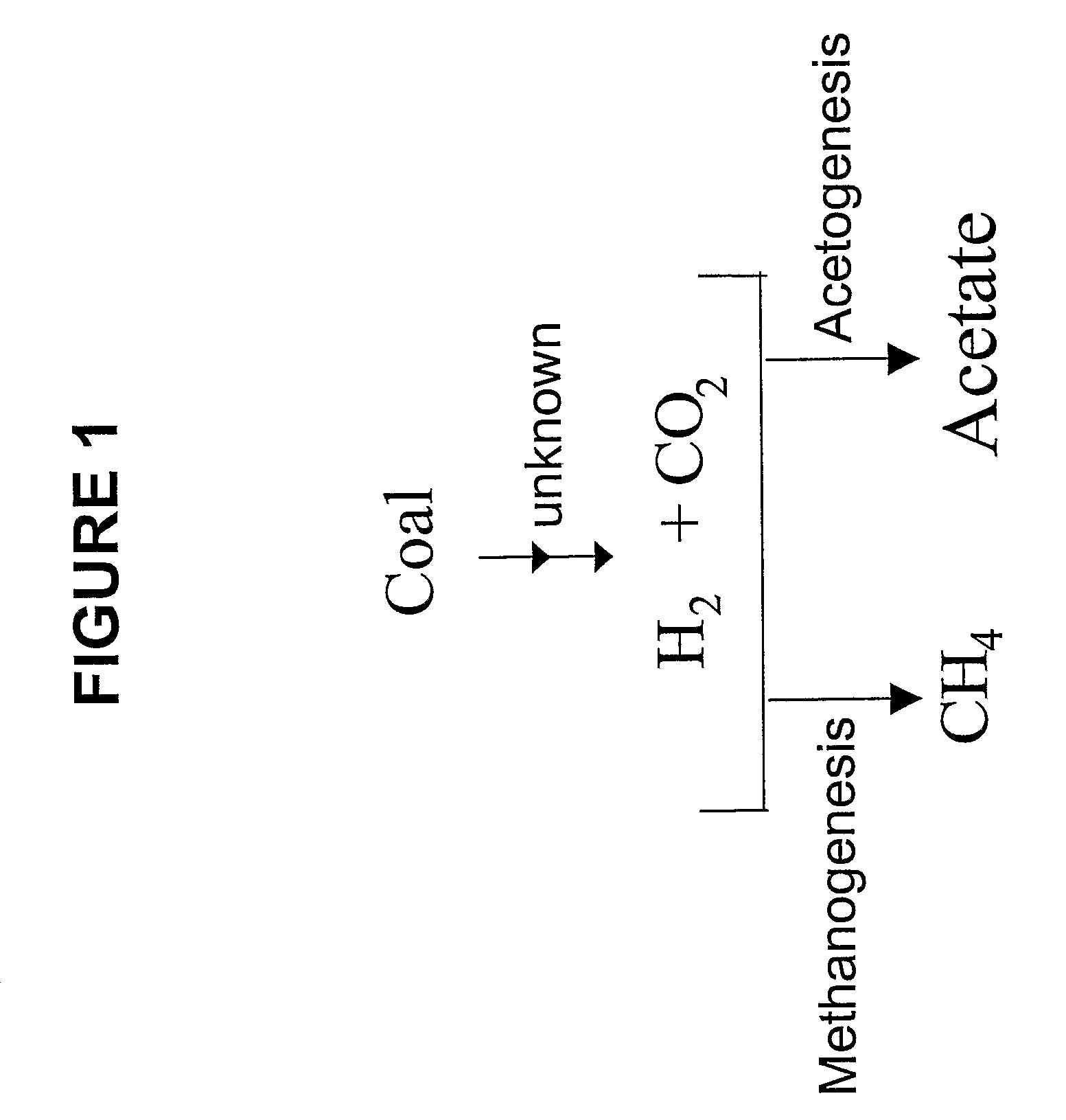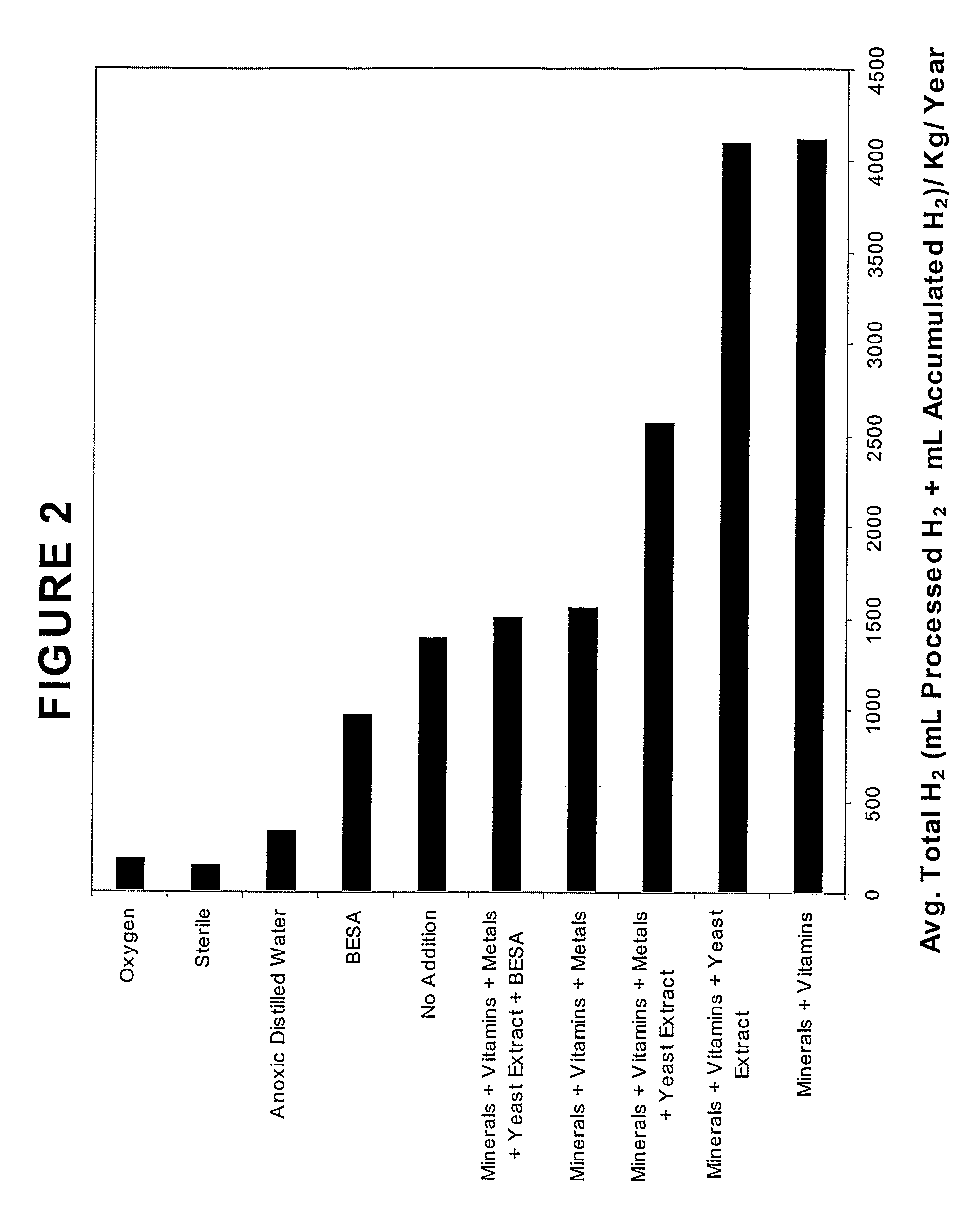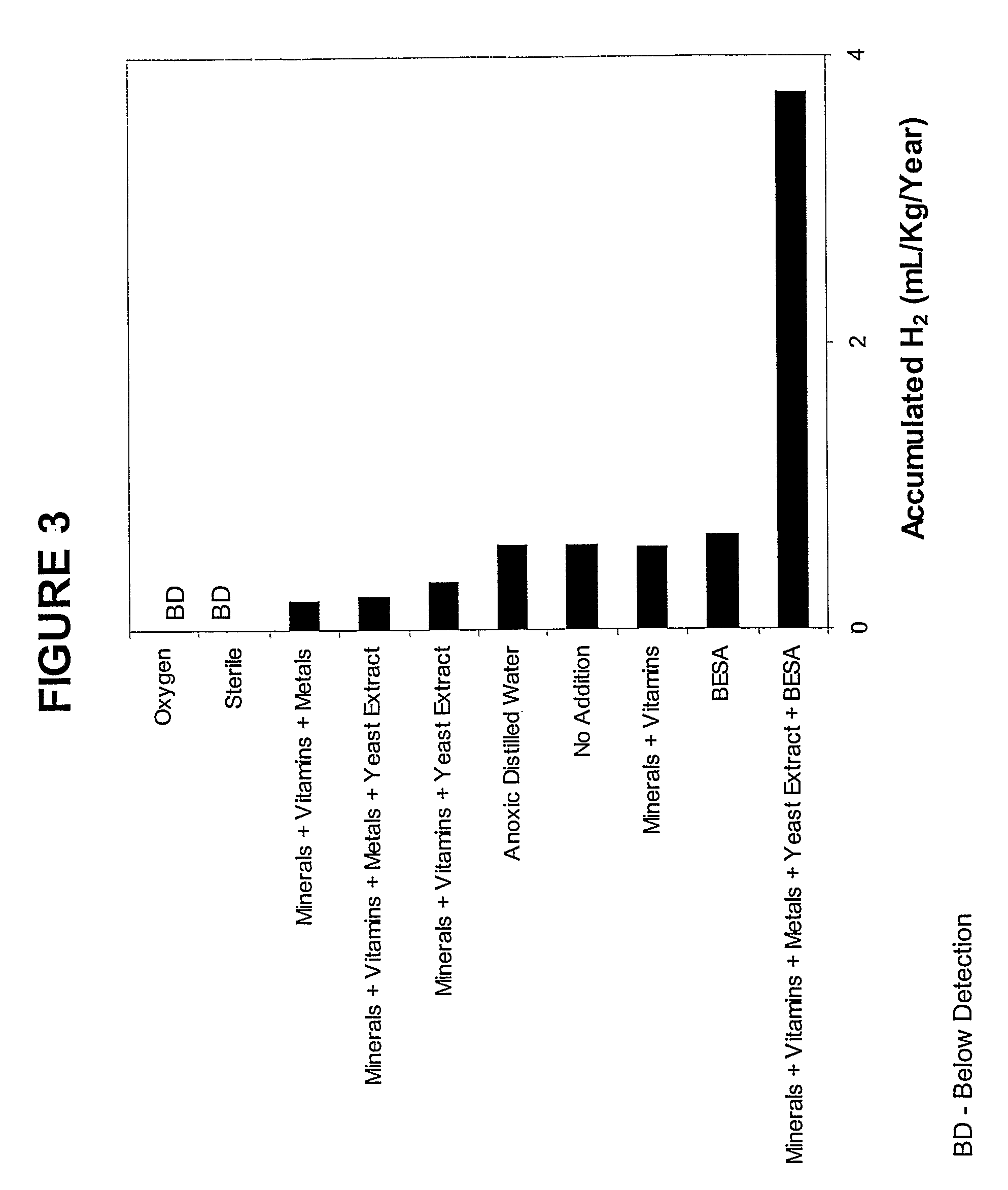Generation of hydrogen from hydrocarbon bearing materials
a technology of hydrocarbon bearing materials and hydrogen, which is applied in the field can solve the problems of limited light penetration, high cost of molecular hydrogen on a cost per btu basis, and the inability to meet the requirements of microbial hydrogen production, etc., to achieve enhanced methanogenesis, hydrogen production from hydrocarbon rich substrates, and the effect of enhancing microbial hydrogen production
- Summary
- Abstract
- Description
- Claims
- Application Information
AI Technical Summary
Benefits of technology
Problems solved by technology
Method used
Image
Examples
example 1
Core Samples
[0039]Core samples were obtained from regions of interest within coal beds. To minimize opportunities for microbial and / or chemical contamination of coal samples, no drilling muds were used during sample collection. The centers of core samples were desirably used for laboratory studies to further minimize the potential for contamination. The core samples were stored and transported in sealed stainless steel canisters which had been purged with argon to maintain an anaerobic environment so that obligately anaerobic microorganisms were not lost. In most cases, the majority of adsorbed gases were removed from the core samples prior to analysis or culture experiments.
[0040]Core samples from the Tongue River area in the northwest portion of the Powder River Basin, Dietz coal seam, were utilized for these experiments. The core was collected in the field in a manner that prevented oxygen exposure by placing it into a steel canister that was purged with argon. Gas in the core us...
example 2
Nutritional Supplements
[0042]Nutritional supplements for stimulating coal biodegradation and hydrogen production were added to the coal slurries from anoxic stock solutions. Most of the nutritional supplements tested are inorganic compounds needed in very low or trace concentrations. These include a nitrogen source as ammonia, a phosphorous source as phosphate, a mixture of ammonia and phosphate, a mineral solution that contains phosphate, ammonia, and potassium, and yeast extract which contains a complex mixture of inorganic nutrients and organic precursors for cell growth. The compositions of the Mineral, Vitamin, and Trace Metal Solutions used in the experiments are listed in Tables 1-3. The Mineral Solution is a 200× concentrate, the Vitamin Solution is a 500× concentrate, and the Trace Metal Solution is a 100× concentrate.
[0043]
TABLE 1Mineral solutionaComponentAmt (g) / literSodium chloride80Ammonium chloride100Potassium chloride10Potassium phosphate10Magnesium Sulfate × 7H2O20Ca...
PUM
| Property | Measurement | Unit |
|---|---|---|
| concentration | aaaaa | aaaaa |
| temperature | aaaaa | aaaaa |
| pH | aaaaa | aaaaa |
Abstract
Description
Claims
Application Information
 Login to View More
Login to View More - R&D
- Intellectual Property
- Life Sciences
- Materials
- Tech Scout
- Unparalleled Data Quality
- Higher Quality Content
- 60% Fewer Hallucinations
Browse by: Latest US Patents, China's latest patents, Technical Efficacy Thesaurus, Application Domain, Technology Topic, Popular Technical Reports.
© 2025 PatSnap. All rights reserved.Legal|Privacy policy|Modern Slavery Act Transparency Statement|Sitemap|About US| Contact US: help@patsnap.com



